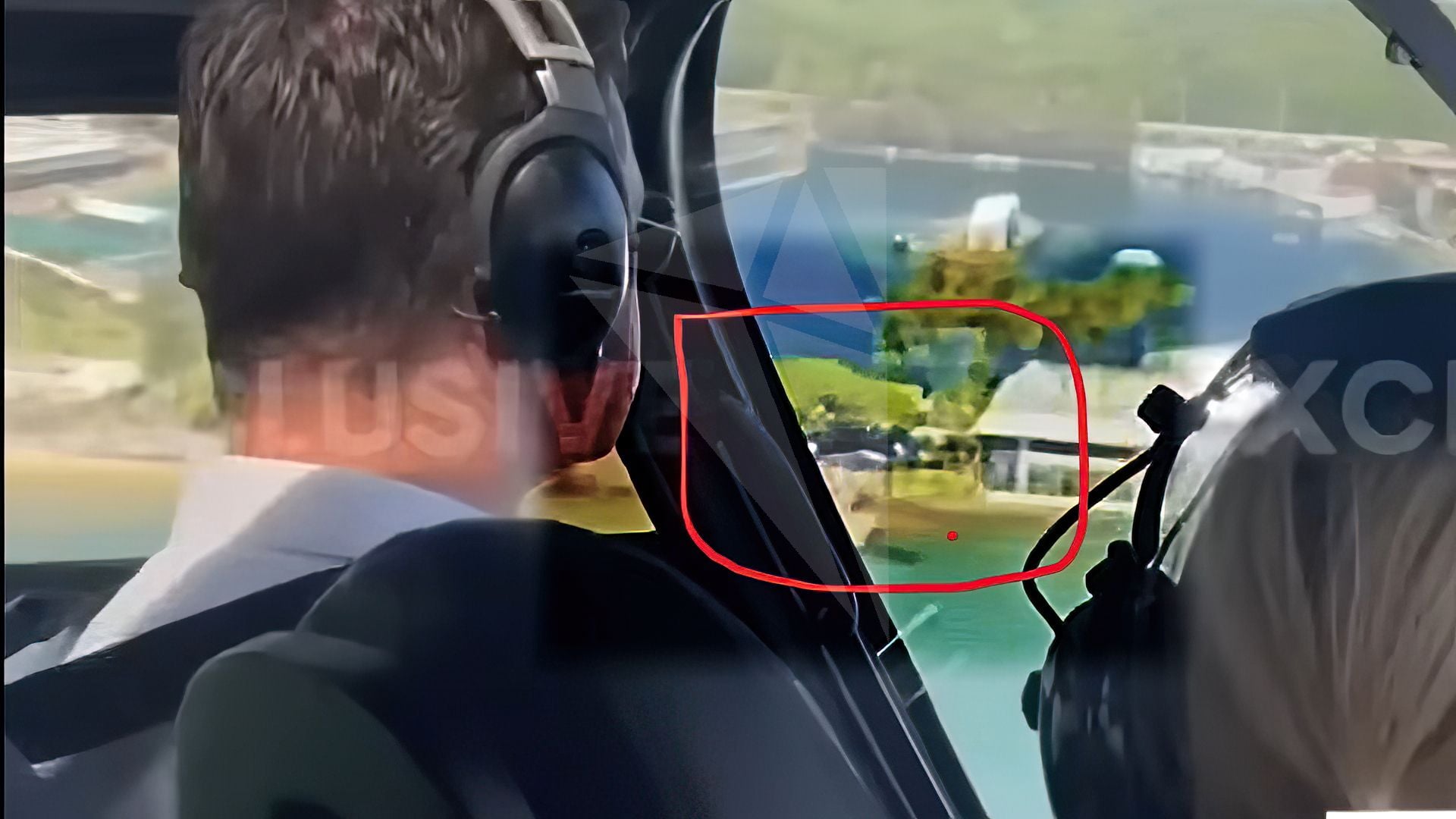Two helicopters collide - Gold Coast, Queensland - Sea World 2/1/2023
ATSB has since posted a summary of the accident at: https://www.atsb.gov.au/publications...rt/ao-2023-001
There isn't anything listed in this summary that wasn't already in the public domain.
There isn't anything listed in this summary that wasn't already in the public domain.
Still, the thrust of what he says regarding blind spots for both helicopters probably remains reasonably valid
if he is going to be specific about that accident then use the right pictures.
The following users liked this post:
Enhanced Video Still Images
I took the previously posted video from inside the landing helicopter, enhanced a small region of the frames using Davinci Resolve, and extracted 3 still images which I post here.
I think that it is clear that the second, Taking-off, helicopter can be seen in the video. However, the video quality is abysmal, and the Aussi News logo plastered all over it, makes it worse!
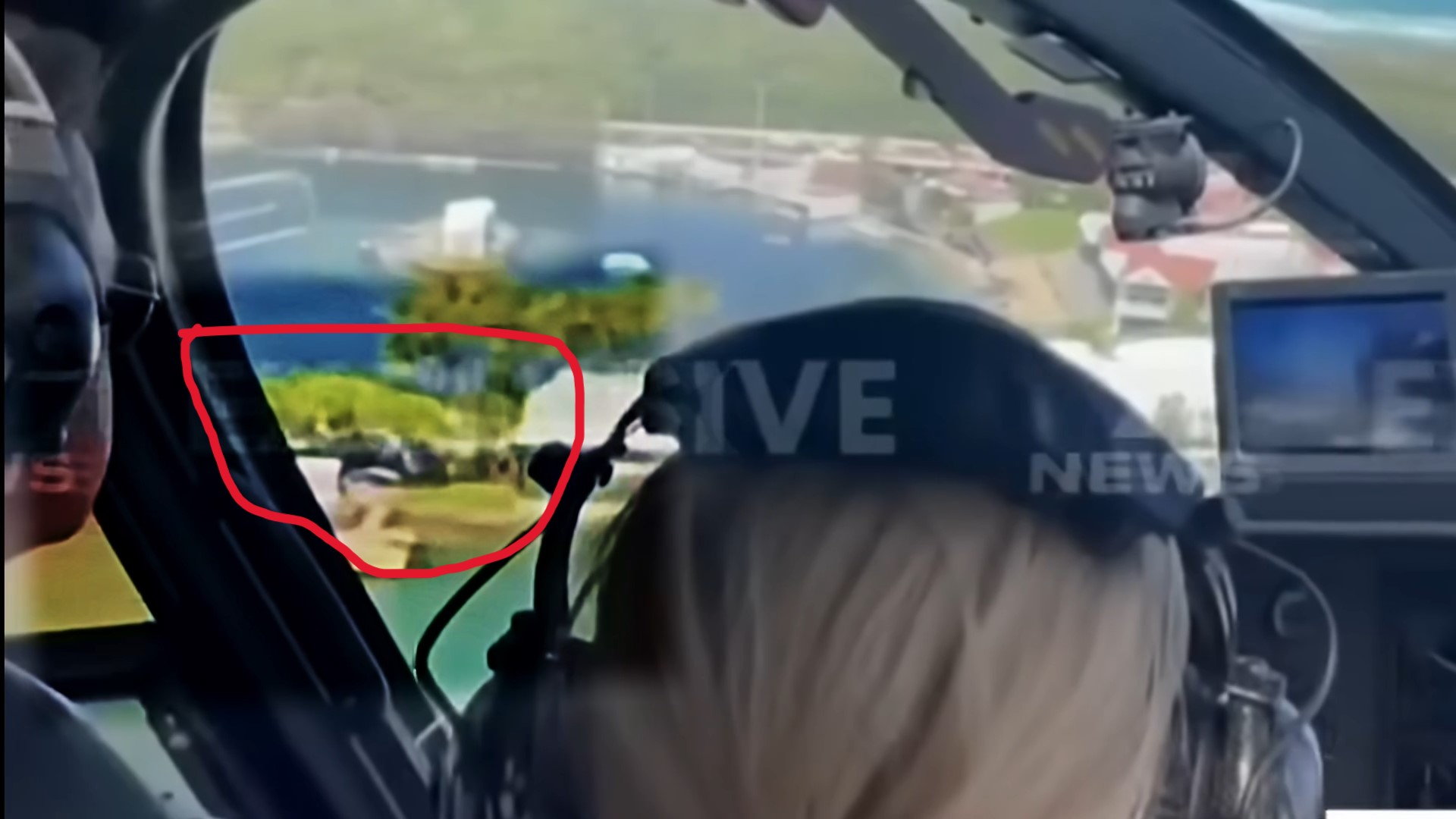
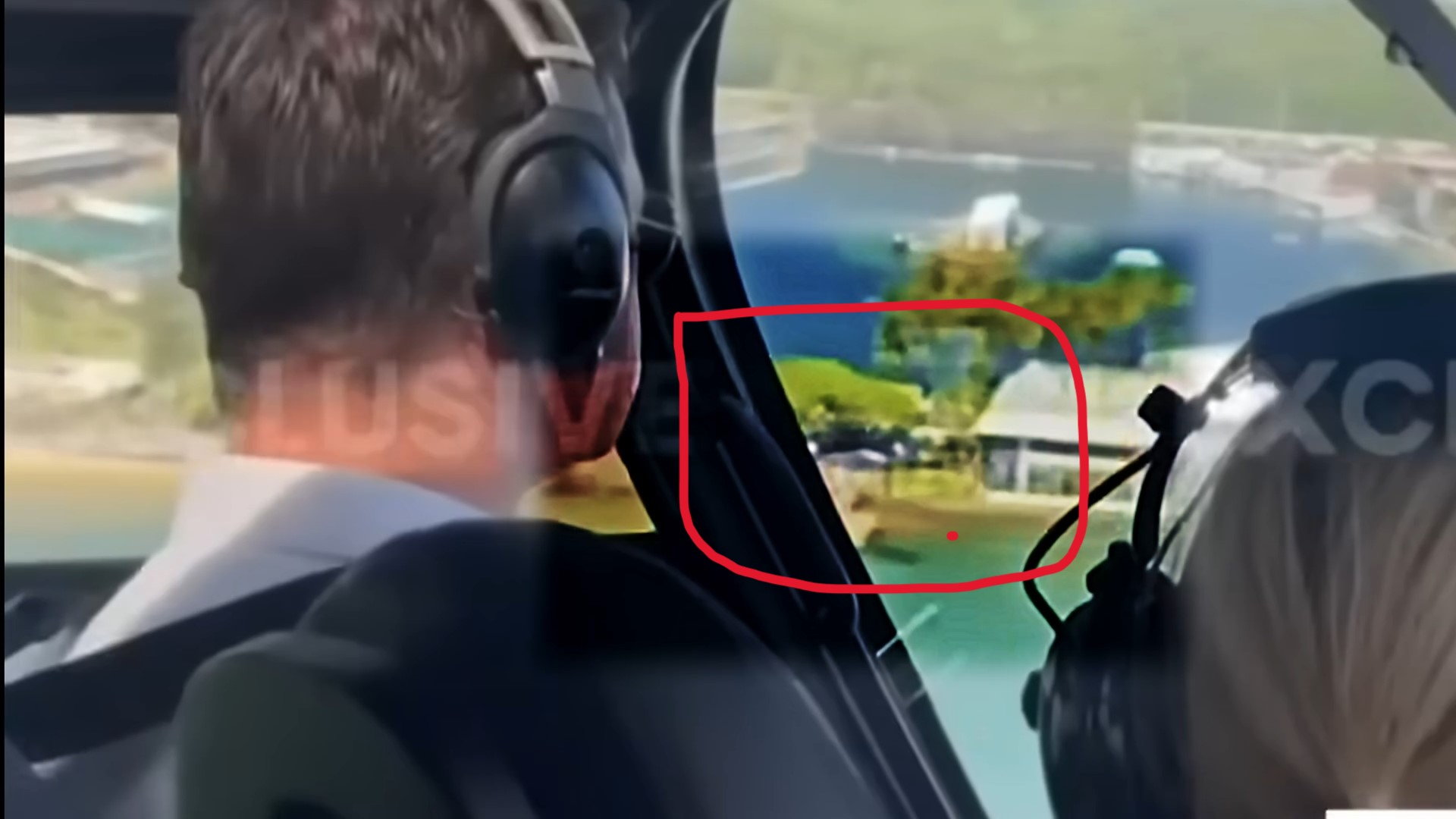
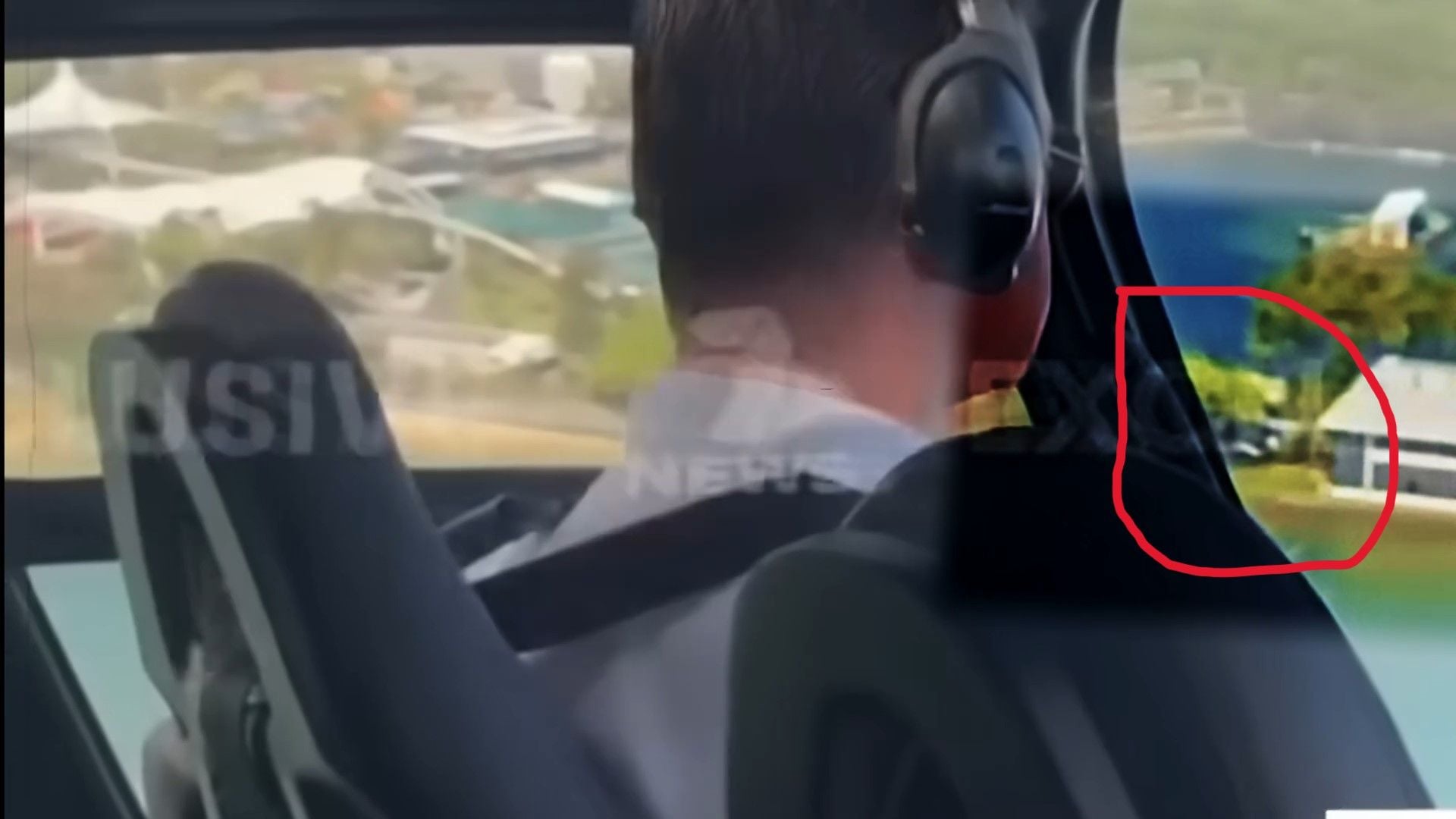
Additionally I suggest as follows:
1} The 2nd heli would be easily visible to unobstructed human eyeballs. The difficulties in seeing it are all due to the lousy video quality. Hence, the passengers spotted it without difficulty. (On the video there is also a barely-visible flickering of white blades, but this is not captured by the stills.)
2} However, it does appear that the 2nd heli is constantly behind the windscreen sidepost, from the POV of the Pilot. This is very unfortunate.
3} The 2nd heli appears to hardly move relative to the ground behind and below it, due to the closing speeds and directions of the 2 Helis. It moves slightly to the right, towards a building, as shown. This is also very unfortunate.
Just my 10 cents worth!
IB
I think that it is clear that the second, Taking-off, helicopter can be seen in the video. However, the video quality is abysmal, and the Aussi News logo plastered all over it, makes it worse!



Additionally I suggest as follows:
1} The 2nd heli would be easily visible to unobstructed human eyeballs. The difficulties in seeing it are all due to the lousy video quality. Hence, the passengers spotted it without difficulty. (On the video there is also a barely-visible flickering of white blades, but this is not captured by the stills.)
2} However, it does appear that the 2nd heli is constantly behind the windscreen sidepost, from the POV of the Pilot. This is very unfortunate.
3} The 2nd heli appears to hardly move relative to the ground behind and below it, due to the closing speeds and directions of the 2 Helis. It moves slightly to the right, towards a building, as shown. This is also very unfortunate.
Just my 10 cents worth!
IB
The following users liked this post:
Being a Contrarian by nature.....what I take from the three photo is the relative movement.
Yes...the dark mass seems to make very little movement towards the building....but also moves towards the Pillar that creates the blind spot.
That to me is the more important information to be gleaned from the series of photos although the movement towards the building is useful as well.
Nice work producing the photos....that certainly adds to the discussion and we appreciate your effort to provide them.
Yes...the dark mass seems to make very little movement towards the building....but also moves towards the Pillar that creates the blind spot.
That to me is the more important information to be gleaned from the series of photos although the movement towards the building is useful as well.
Nice work producing the photos....that certainly adds to the discussion and we appreciate your effort to provide them.
Join Date: Jul 2021
Location: Southern United States
Posts: 122
Likes: 0
Received 60 Likes
on
30 Posts
Every time Iíve seen another aircraft in a converging flight path like this (thankfully not a common occurrence, obviously much farther apart) itís been very uncomfortable, unnerving even. Itís hard to describe, but the lack relative motion is a trip. Anyone else feel this way?
FltMech
FltMech
I wonder if there are any instances where Flarm units have been installed in a helicopter fleet? Are there factors with the rotors interfering with the exchange of data between the units which is essential for their full and satisfactory operation?
The strong point of Flarm operation is that the trajectories of potentially conflicting aircraft are constantly analysed, updated, and if a probability of collision is flaqged, both audio and visual alarms are presented in both aircraft - at least that's the intention / expectation. We've certainly found them to be useful - and even essential in high density glider operational sites - especially in contests. I've no idea how other position reporting systems operate, and what they offer in a situation like this, but I can't altogether escape speculating that a fleet of aircraft operating in regular close proximity with even just a stand alone Flarm system installed and operating in all aircraft would have just one more reserve of safety - one less hole in the cheese - additional to lookout, radio calls (and acknowledgement) and other SA factors which we all know about and use, but which can have their rare breakdowns when bad things can (and do) happen.
The strong point of Flarm operation is that the trajectories of potentially conflicting aircraft are constantly analysed, updated, and if a probability of collision is flaqged, both audio and visual alarms are presented in both aircraft - at least that's the intention / expectation. We've certainly found them to be useful - and even essential in high density glider operational sites - especially in contests. I've no idea how other position reporting systems operate, and what they offer in a situation like this, but I can't altogether escape speculating that a fleet of aircraft operating in regular close proximity with even just a stand alone Flarm system installed and operating in all aircraft would have just one more reserve of safety - one less hole in the cheese - additional to lookout, radio calls (and acknowledgement) and other SA factors which we all know about and use, but which can have their rare breakdowns when bad things can (and do) happen.
The following users liked this post:
Despite the good image enhancements made by Ivor_Bigunn (post #283) and DroneDog (post #286) I still struggle to interpret the attitude of VH-XKQ as seen by VH-XH9 in the video. To me, the stills make it look as if -XKQ is flying from left to right when in reality, we should be seeing it fairly much from its front right (and upper) quarter. Does anyone else similarly struggle to interpret what they see?
The footage taken from the departure helipad shows -XKQ maintaining a relatively consistent heading and fuselage pitch once climbing out from the pad. First screen shot below is cropped from that footage from an early stage of the departure with -XH9 also in view. Aside from differences introduced by perspective (tail looks relatively larger to the people on the ground than it would to passengers in -XH9), a horizontal flip of this image should then be a rough representation of the outline shape of -XKQ as seen on board -XH9 close to the time of impact (second image below). Of course you have to imagine seeing the aircraft from in front rather than behind when looking at this image. A cropped version of the enhancement by Ivor_Bigunn is the third image below. I can't reconcile these two.

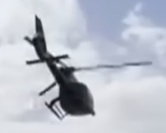
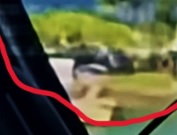
Thanks to John Eacott for pointing us to the internal (approximate) pilot eye view of an EC130 (post #275) from the PHS website. I took a screen shot of this looking generally in the same direction as -XH9 would have been approaching -XKQ. While there is a lot of visibility out of the EC130, perhaps objects like the pillars and overhead console were still obstructing the view where it mattered the most in this case:
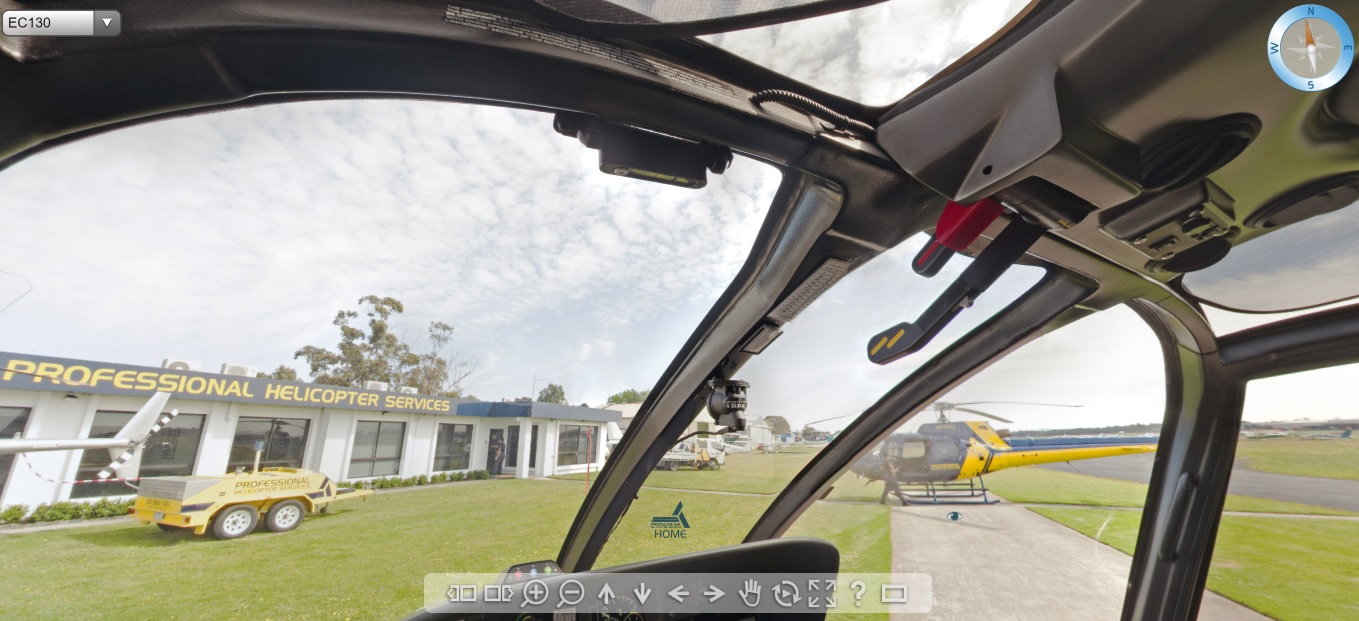
The footage taken from the departure helipad shows -XKQ maintaining a relatively consistent heading and fuselage pitch once climbing out from the pad. First screen shot below is cropped from that footage from an early stage of the departure with -XH9 also in view. Aside from differences introduced by perspective (tail looks relatively larger to the people on the ground than it would to passengers in -XH9), a horizontal flip of this image should then be a rough representation of the outline shape of -XKQ as seen on board -XH9 close to the time of impact (second image below). Of course you have to imagine seeing the aircraft from in front rather than behind when looking at this image. A cropped version of the enhancement by Ivor_Bigunn is the third image below. I can't reconcile these two.



Thanks to John Eacott for pointing us to the internal (approximate) pilot eye view of an EC130 (post #275) from the PHS website. I took a screen shot of this looking generally in the same direction as -XH9 would have been approaching -XKQ. While there is a lot of visibility out of the EC130, perhaps objects like the pillars and overhead console were still obstructing the view where it mattered the most in this case:

Last edited by helispotter; 8th Jan 2023 at 03:37.
The following users liked this post:
a horizontal flip of this image should then be a rough representation of the silhouette of -XKQ as seen on board -XH9 close to the time of impact
Sorry Ascent Charlie, my poor choice of words. I should have said "outline shape" realising that outline was against the cluttered background as seen in the video from inside the helicopter. I will amend wording of my post. The outline shape is seemingly quite different between the flipped image and the view from within the cabin of -XH9.
Originally Posted by [email protected]
Except that he isn't actually landing, he is positioning before making his approach.
I'm not convinced that that is the climbing helicopter that's circled. If you watch the video on Youtube at 25% speed, the white structure looks to be in front of the rear of whatever that dark object is, (truncating the tail boom to look more like a Jetranger than an EC130). The EC has substantial rear skid struts that aren't obvious in the video. I think it is some feature on the ground. The rotor effect is the Channel 7 text scrolling across that feature.
A few more images released today from the survivors, who are also somewhat peeved that the video that was provided to the ATSB somehow found its way to Channel 7 
Screenshots from the Courier Mail, unfortunately behind a paywall:
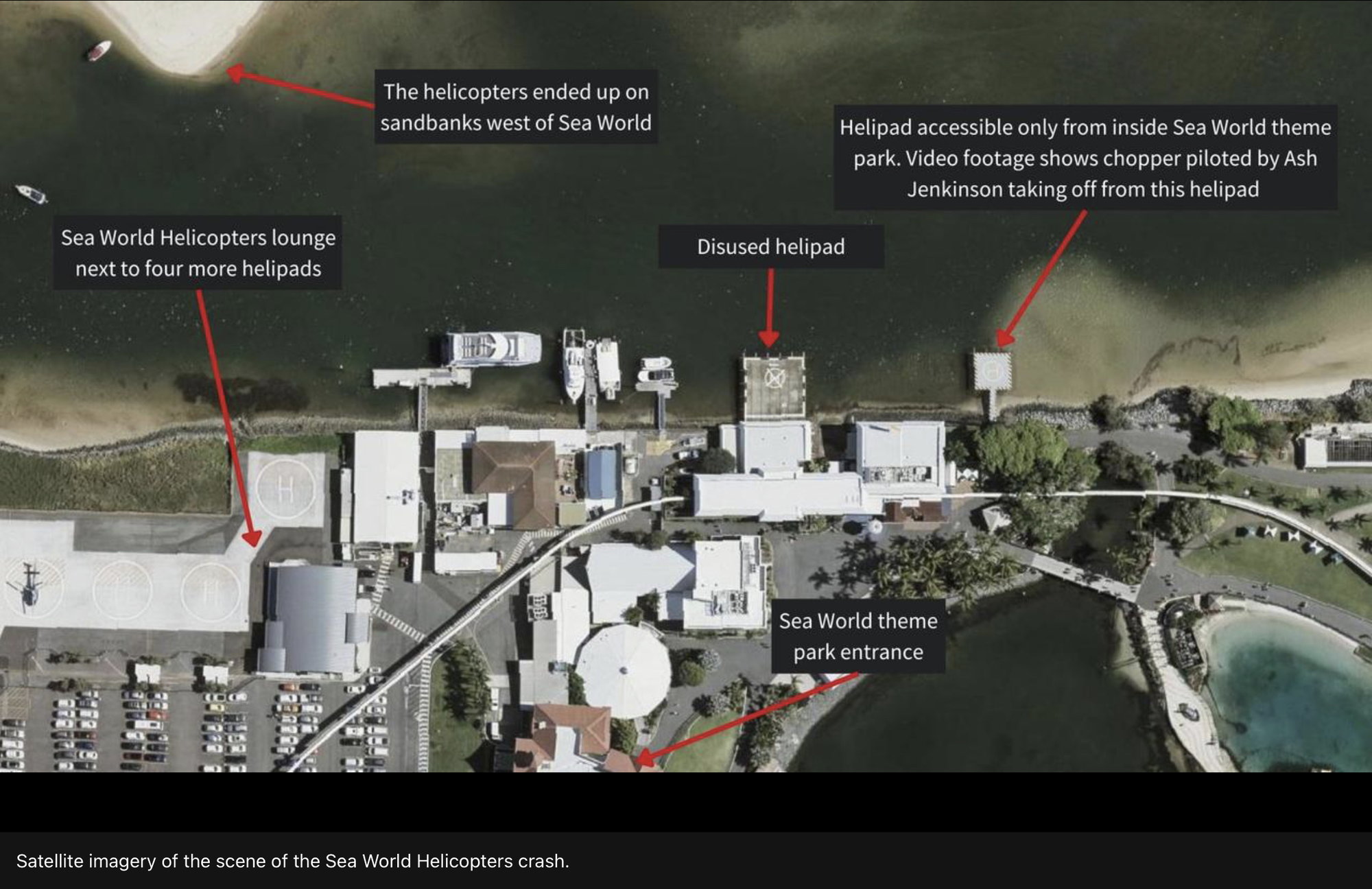
An overview of the pad layout
Self explanatory:

Amazing photos immediately after the landing: hats off to Michael for his flying skill to recover and make a successful landing.
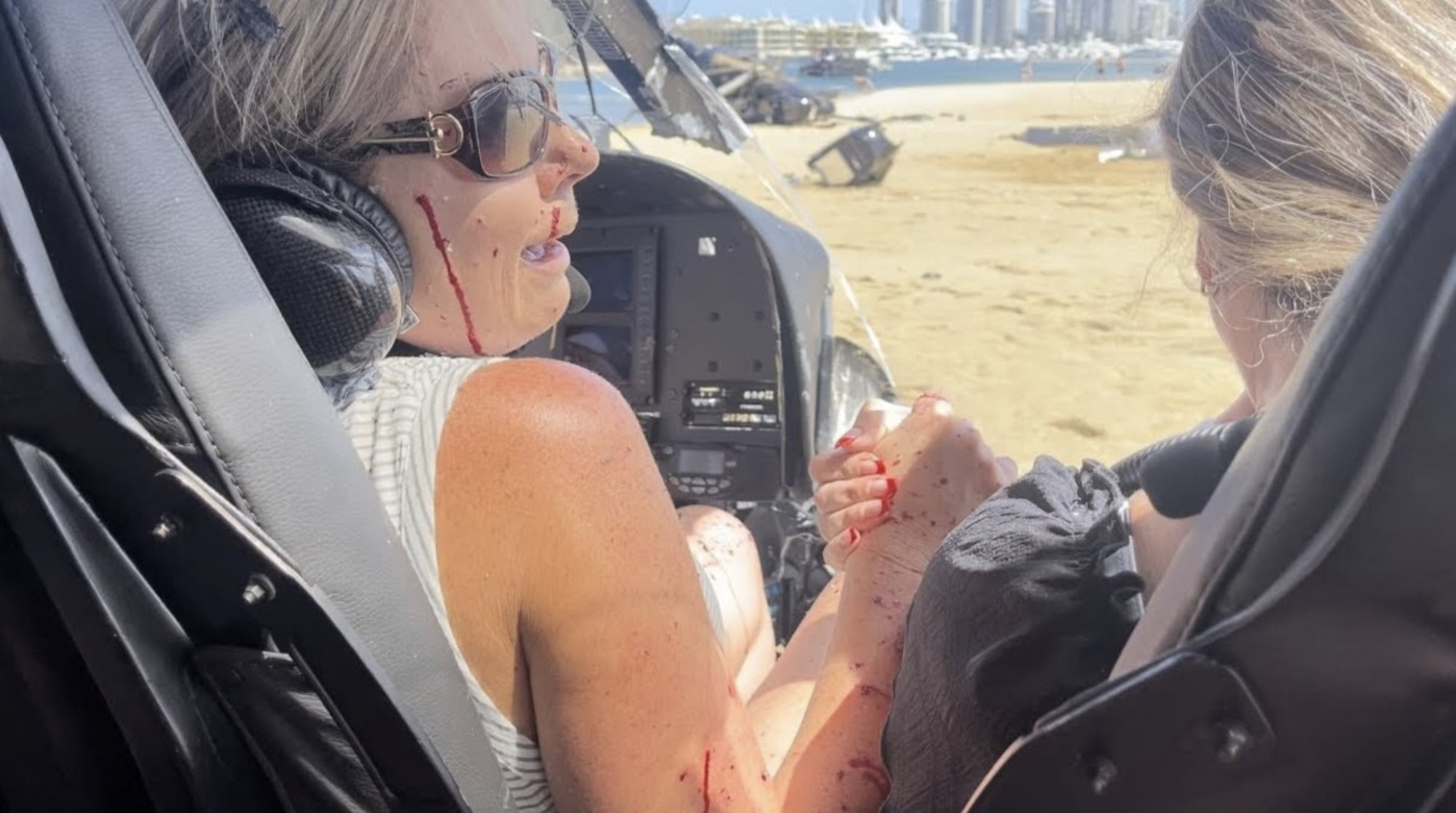


Screenshots from the Courier Mail, unfortunately behind a paywall:

An overview of the pad layout
Self explanatory:

Amazing photos immediately after the landing: hats off to Michael for his flying skill to recover and make a successful landing.


The following 2 users liked this post by John Eacott:
It doesn't matter because he had right of way anyway - not sure why you have a problem about this.
Define landing in regulatory terms......
Originally Posted by [email protected]
Except that he is above 150' to 200', not descending and not on final approach. He is not a landing aircraft. he's not even pointing at the pad. Would you call an aircraft on base leg a landing aircraft?
It doesn't matter because he had right of way anyway - not sure why you have a problem about this.
Define landing in regulatory terms......
It doesn't matter because he had right of way anyway - not sure why you have a problem about this.
Define landing in regulatory terms......
91.330 items 2 and 3 deal with define circumstances for giving way when approaching or landing.
item 6 is the basic give way to the right rule.
The following users liked this post:
Couple of questions for those that have operated at Sea World before;
- Why was the departing aircraft taking off from the single pad as opposed to the four pads together?
- Whatís SOP as far as which pad is used?
- Is there a link or any recording of the radio calls between the tourist helicopters? Iím just wondering if they knew about each other from the get go (blind spot or not)?
- Why was the departing aircraft taking off from the single pad as opposed to the four pads together?
- Whatís SOP as far as which pad is used?
- Is there a link or any recording of the radio calls between the tourist helicopters? Iím just wondering if they knew about each other from the get go (blind spot or not)?
Couple of questions for those that have operated at Sea World before;
- Why was the departing aircraft taking off from the single pad as opposed to the four pads together?
- Whatís SOP as far as which pad is used?
- Is there a link or any recording of the radio calls between the tourist helicopters? Iím just wondering if they knew about each other from the get go (blind spot or not)?
- Why was the departing aircraft taking off from the single pad as opposed to the four pads together?
- Whatís SOP as far as which pad is used?
- Is there a link or any recording of the radio calls between the tourist helicopters? Iím just wondering if they knew about each other from the get go (blind spot or not)?
To use the other pads would require you to leave the theme park, there's no internal access AIUI.
The following users liked this post:
Traffic Detection Systems (such as Flarm)
I wonder if there are any instances where Flarm units have been installed in a helicopter fleet? Are there factors with the rotors interfering with the exchange of data between the units which is essential for their full and satisfactory operation?
The strong point of Flarm operation is that the trajectories of potentially conflicting aircraft are constantly analysed, updated, and if a probability of collision is flaqged, both audio and visual alarms are presented in both aircraft - at least that's the intention / expectation. We've certainly found them to be useful - and even essential in high density glider operational sites - especially in contests. I've no idea how other position reporting systems operate, and what they offer in a situation like this, but I can't altogether escape speculating that a fleet of aircraft operating in regular close proximity with even just a stand alone Flarm system installed and operating in all aircraft would have just one more reserve of safety - one less hole in the cheese - additional to lookout, radio calls (and acknowledgement) and other SA factors which we all know about and use, but which can have their rare breakdowns when bad things can (and do) happen.
The strong point of Flarm operation is that the trajectories of potentially conflicting aircraft are constantly analysed, updated, and if a probability of collision is flaqged, both audio and visual alarms are presented in both aircraft - at least that's the intention / expectation. We've certainly found them to be useful - and even essential in high density glider operational sites - especially in contests. I've no idea how other position reporting systems operate, and what they offer in a situation like this, but I can't altogether escape speculating that a fleet of aircraft operating in regular close proximity with even just a stand alone Flarm system installed and operating in all aircraft would have just one more reserve of safety - one less hole in the cheese - additional to lookout, radio calls (and acknowledgement) and other SA factors which we all know about and use, but which can have their rare breakdowns when bad things can (and do) happen.
Both mishap helicopters were also already equipped with ADS-B Out (no difference here to ĄFlarm Outď). The important difference you point out is in the software algorithms used to analyze targets (as received by the ADS-B In or Flarm receiver), in order to avoid nuisance alerts and to prioritize the most relevant threat in a high density, VFR environment. As others have mentioned, many ADS-B traffic displays seem more suited for fast moving fix wing people on an IFR flight plan.
SkyDemon (iOS nav app) does a fantastic job in combining and analysing traffic data received (from several sources, including ADS-B and indeed also Flarm).

This would have been the picture similar to what the departing helicopter would have seen (with helicopter symbols, of course).
See the focus of this app on the 1 NM to 2 NM radius around your ownship in what the TCAS-style pop-up window? The landing helicopter would have got the same the picture, relative to their current position.
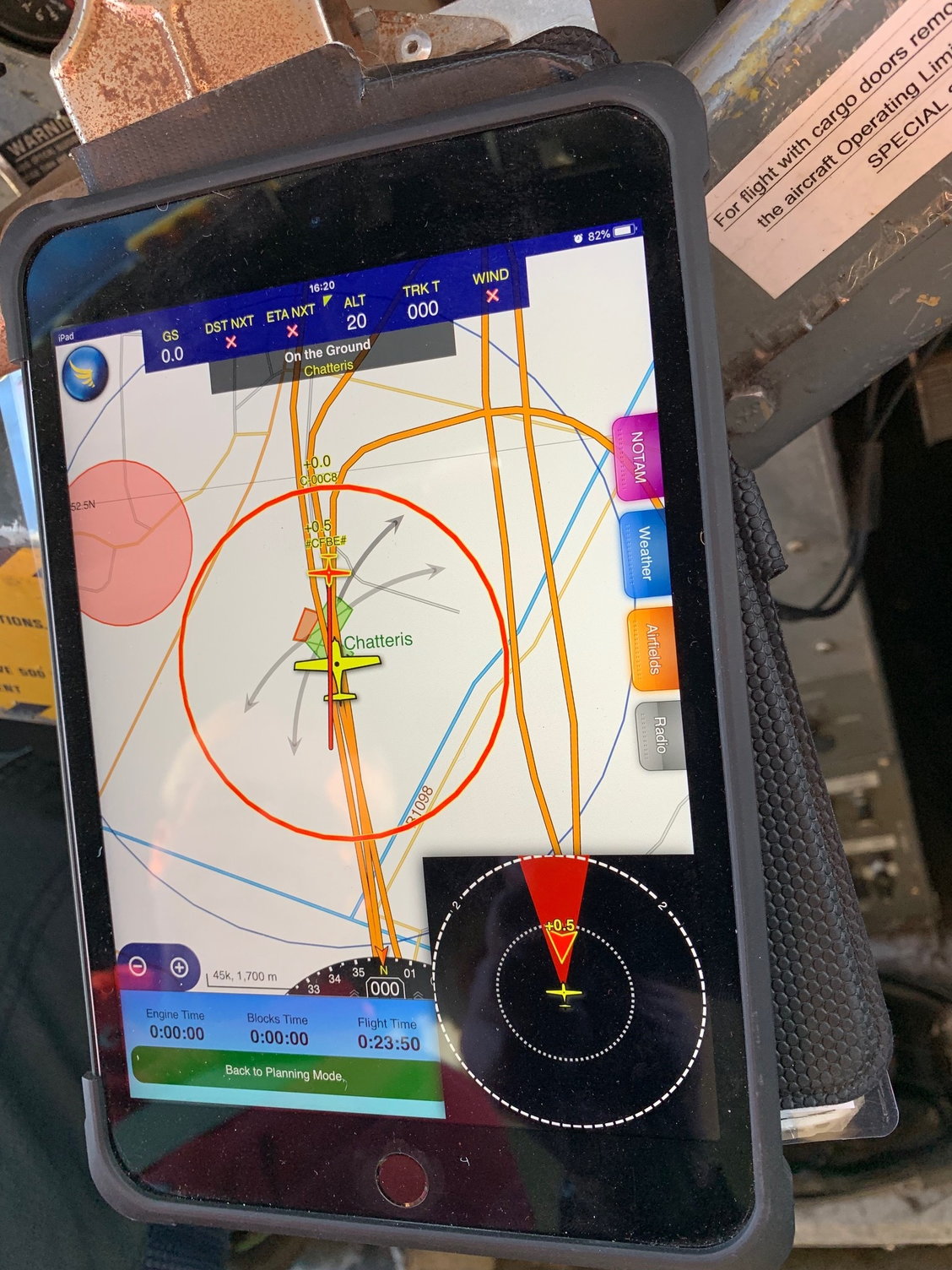
And a few seconds later, the initial proximity alert would have turned into a collision alert.
Important to note that collision alerts are sent as verbal warning to the crew, via cable or Bluetooth to the audio panel, or directly to the pilots headset. I am using this set-up for years, and can vouch for its suitability in a helicopter environment.
The following 3 users liked this post by Hot and Hi:
From when I flew with them (few years back) and last visited Sea World (12 weeks ago, but didn't fly) the "single pad" is used for flights with passengers who are also visitors to Sea World theme park, ie those who book a joyflight while they are inside the park as an add-on to their day out. They have a little hut there with a sandwich board showing the routes etc and a locker room type thing for preflight briefing.
To use the other pads would require you to leave the theme park, there's no internal access AIUI.
To use the other pads would require you to leave the theme park, there's no internal access AIUI.
I guess Iím curious as to what was done differently on this particular day procedure-wise and what effect that may have had one what each pilot expected to see/hear?
this will be the best document air disaster ever.
I can see a recommendation from CASA that will limit the number of passengers a single pilot can take on a joy ride. This appears to be pilot overload.
Say, a max of four passengers for each pilot. If there had been two pilots or a pilot and cabin crew this may not have happened.
I can see a recommendation from CASA that will limit the number of passengers a single pilot can take on a joy ride. This appears to be pilot overload.
Say, a max of four passengers for each pilot. If there had been two pilots or a pilot and cabin crew this may not have happened.
The following 3 users liked this post by MagsOffTap:




